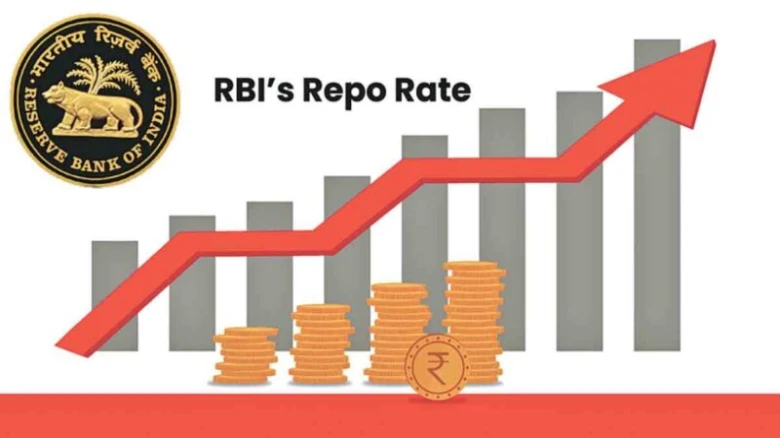Sports

Digital
Desk: As expected, India's central bank raised the benchmark repo rate by 50
basis points to 5.9% on Friday. The announcement was made by Reserve Bank of
India (RBI) governor Shaktikanta Das, who warned of an "extraordinary
global geopolitical situation."
Das stated after a meeting of the
monetary policy committee that the RBI projected the country's GDP growth on an
inflation-adjusted basis for the fiscal year 2022-23 at 7%, down from 7.2%
previously. GDP growth in the second quarter is expected to be 6.3%, 4.6% in
the third quarter, and 4.6% in the fourth quarter of 2022-23.
Das added that inflation is
currently hovering around 7% and that the RBI expects it to remain elevated at
around 6% in the second half of the fiscal year.
Central banks in advanced and
emerging economies are raising interest rates almost in lockstep to combat
inflation in the face of the Ukraine conflict, rising energy prices, and
lingering supply-chain disruptions.
To reduce the money supply in the
economy, central banks typically raise the benchmark repo rate – the interest
rate at which commercial banks borrow money by selling their securities to the
Reserve Bank.
From the United States to Europe and
India, countries are aggressively raising lending rates in order to limit the
supply of cheap money and thus help to reduce inflation. However, such monetary
tightening comes at a cost. It dampens investment, costs jobs, and slows
growth, which is a trade-off faced by most countries, including India.
"We are grateful, ever
vigilant, ever striving," Das said, quoting Mahatma Gandhi. He warned of
continuing inflationary pressures on Asia's third-largest economy. "The
global geopolitical situation is putting a strain on domestic inflation."
The acute imported inflationary pressure has subsided, but food and fuel prices
have remained elevated."
The RBI raised interest rates by 40
basis points in an unscheduled meeting in May, 50 basis points in June, and 50
basis points in August. One basis point is equal to one-hundredth of a
percentage point.
According to Das, there are
"upside risks" to food prices, and cereal price pressure has spread
from wheat to rice, while lower pulse sowing could also add pressure.
"These risks to food inflation have negative effects on inflationary expectations,"
he said, warning of "second-order effects," or spill-over effects.
"India is in a better position
than many other economies, but allowing high inflation to persist exacerbates
second-order effects."
The RBI governor stated that the
overarching goal is to "maintain macroeconomic stability."
On September 16, the World Bank
predicted a 2023 recession. "Global growth is slowing sharply, and more
slowing is likely as more countries enter a recession." "My deep
concern is that these trends will continue, with long-term consequences that
will be devastating for people in emerging market and developing
economies," said World Bank Group President David Malpass in a statement.
The US Federal Reserve's unyielding
tightening of monetary policy to control inflation has boosted the value of the
dollar and bond yields, scarring other currencies, including the rupee.
The rupee's value has declined as
the dollar has strengthened. The RBI has intervened in markets to support the
national currency by selling dollars from India's forex reserves.
"Reserves have fallen by 67% as
a result of valuation changes caused by an appreciating dollar and higher bond
yields." "Market intervention will remain prudent," Das stated.
He implied that the RBI will be cautious about how far it will go to defend the
rupee.
On September 23, the country's
precious foreign exchange reserves stood at $537.5 billion.
A current account deficit (CAD) of
2.8% of GDP in the first quarter and a trade deficit of 8.1% point to
"weakening global growth and consequently high trade deficit,"
according to Das.
The difference between what India spends in the rest of the
world and what it earns from the rest of the world is referred to as CAD.
The RBI governor stated that service exports remained
strong, increasing 35.4% between April and June, while remittances increased
22.6%. According to him, the net surplus in services exports will help to
offset the trade deficit.
Leave A Comment